Sony X750H / X70
Product Name: Sony X750H / X70
Product Description: 2020 4K LED LCD TV
-
Design - 8.8/10
8.8/10
-
Video Quality - 8/10
8/10
-
Ports & Connectivity - 8.5/10
8.5/10
-
OS, Apps and Features - 8.2/10
8.2/10
-
Price / Quality - 9/10
9/10
Summary
Total Score
Pros
- Good upscaling
- Nice color reproduction
- Extremely low input lag
- Great contrast ratio
Cons
- Low HDR brightness
- No VRR or ALLM
- Narrow viewing angles
- Motion performance could be better
Cheapest Places to Buy :
*We are a reader-supported website. When you buy through links on our site, we may earn a small affiliate commission at no extra cost to you. Home Media Entertainment does not accept money for reviews.*
A the beginning of 2020 all major manufacturers presented their new TVs that will keep us company through the rest of the year and as it is common most attention falls on their higher end models as these bring with them the most advanced and latest technologies each manufacturer has to offer. But while all these top flagships from Sony are great there is a huge number of consumers looking for something more affordable for their entertainment. And in our Sony X750H review today we will be looking in such a TV which is actually the most budget friendly 4K TV on Sony’s arsenal for this year.

With the X750H we will begin a series of reviews where we will be looking at many of their latest offerings but today we go directly to the bottom of the performance ladder and see if this model has what it takes to offer a decent 4K HDR experience. Now in our experience these low budget TVs that promise to support 4K HDR fall short of their claims and usually their performance leave a lot to be desired so we are here to determine if the X750H behaves similarly or it manages to offer any substantial improvements over previous low budget units.
The X750H is being offered in different sizes depending the region and comes with a TRILUMINOS display and a VA panel along with Edge LED lighting for the smaller sizes while for 55″ and above Sony is using a Direct LED lighting system. The TV is using the 4K Processor X1 and supports only the basic HDR10 along with HLG.
For audio we get a simple 2.0 channels system while depending on the region you will either get a less capable Android 9.0 smart platform or Sony’s linux system. There is also a few extras available like Chromecast and Google Assistant and except from the many streaming services available don’t expect anything more in terms of extra features or functions.
So without further delay let’s start our review…
Design
Since this TV is supposed to replace 2018’s X750F there are a lot of similarities between the two models while the X750H also borrows design elements from other low end units like the X800H among others. Overall this is a nice looking TV, all things considered, but as its price dictates everything is made out of plastic with some metal parts so don’t expect any fancy or premium materials here.
The TVs overall thickness was measured around 3″ (7.62 cm) which is slightly thinner than the X750F but in general we would describe it a bit thicker than what we would like. It will still look ok if wall mounted if you use the downwards looking ports but it will slightly protrude from the wall no matter what you do. The borders are ok for a low cost model but they are definitely bigger than some high end borderless units. Also they protrude slightly from the screen something that is usual among low cost TVs.
Turning the TV around we get a back side that looks extremely similar to other Sony models like the X750F and X800G. The lower part is made out of plastic and is housing all the electronics, connections and sound system while the top seems to be made out of metal. A single black gloss line separates the lower compartment from the rest of the screen while all connections are positioned on the right side except from the power which as usual is positioned at the opposite corner.
The stand that the X750H is using is the typical bench type style that covers almost the entire length of the TV so while this design does keep the TV more stable the bigger the size the bigger the furniture you will need to place it on. The legs do stand slightly closer to each other compared to other bench type stands so this is slightly more comforting if your furniture is not that big but in general you will have to measure beforehand to make sure it fits. As for cable management there are special clips that attach to the back of the legs and you can use them to keep the cables all grouped together.

When it comes to their remotes Sony was always playing catch up compared to Samsung and LG. And this was a major complaint we had as even many of their higher tier offerings were using atrocious and old style looking remotes which was unacceptable. Sony seems to have fixed that by redesigning the whole thing and at least now you will get a remote that looks far better and has a more premium feel compared to the cheap remotes we were getting before.
Featuring a grey metal texture the remote that comes with the X750H is definitely on the large side and has all the functions of a smart remote. Except from the usual numerical pad and navigation buttons you get two big dedicated buttons for Google Play and Netflix while there is also a Google Assistant button that can be used with the built-in microphone in order to issue your voice commands. All buttons have a nice rubber feel to them and have certain distance from each other to avoid pressing the wrong one but unfortunately there is no backlight function that could greatly help in a low lit environment.
Closing what we can say is that Sony did a pretty good job for their bottom tier TV. This may not be a design that will turn heads but Sony made sure to keep the quality at a certain level for this price category and what you get is more than satisfactory. We also liked the inclusion of the new redesigned remote which looks far more premium than some other plastic variants.
Video Quality
Processor technology used
For 2020 Sony has been using three different processors for their TVs based on their performance rating. And while the top offerings get the X1 Ultimate and the medium tier category the X1 4K HDR processor the X750H seems to be the only TV model that will be using the least capable 4K Processor X1.

The 4K Processor X1 is missing many of the advanced features we find in the other two silicones like Object-based HDR remaster and Dual database processing but it includes Dynamic Contrast Enhancer and Precision color mapping.
By using the 4K X-Reality PRO picture processing technology the X750H is able to up-scale any kind of source content up to 4K with remarkable results. 4K X-Reality PRO is using a variety of noise reduction techniques to sharpen and refine images while patterns in images are compared with patterns stored in a unique database to find the best hue, saturation, and brightness for each pixel.
We went through various content material from low resolution video, to 720p and 1080p content and everything seemed to upscale nicely to 4K without any visible artifacts from the process. The X750H may not be a particularly capable model but when it comes to upscaling everything was more than satisfactory.
Lighting technology used
When it comes to the backlight system used by the X750H it seems that Sony went with different options for different sizes something we have seen them doing in the past again. So for the two smaller sizes, that is the 43″ and the 49″, Sony used Edge LED systems while for the bigger ones they switched to Direct LED ones. None of these sizes have Local Dimming and instead they use what Sony calls “Frame Dimming”.
The omission of a Local Dimming feature has certainly a negative effect on the contrast ratio as we have seen previously in other tests we had made and obviously it limits even more the capabilities of the X750H when it comes to brightness and light control. But to be honest this was to be expected as all these lower tier models never have Local Dimming to begin with.
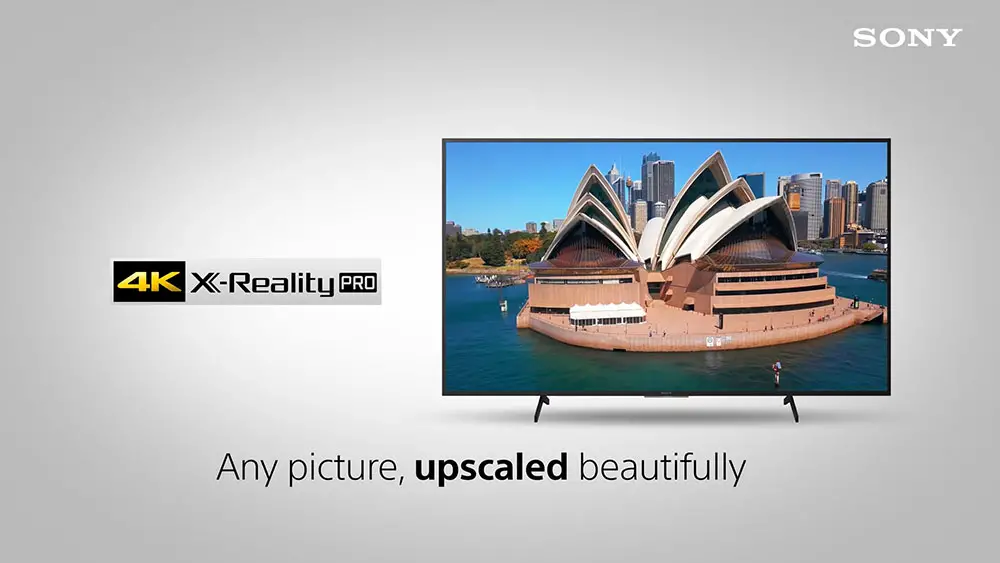
Brightness / Contrast
As always one of the most crucial factors in any 4K HDR TV today is brightness as this defines how good HDR content can be displayed on screen. Unfortunately we have seen many times manufacturers promoting low tier TVs as HDR capable without having the brightness output to make HDR content justice. And it seems from our measurements that the X750H is another of these low budget models that offer subpar performance in this area.
In our SDR brightness over a 10% window we got 362 nits which is adequate as there are not very high brightness requirements in SDR content and thus the X750H did a pretty good job in this part. But in our HDR brightness test over a 10% window we got only 386 nits and while this may not be completely bad we wouldn’t consider it good either. We could classify it as slightly below average and it can definitely not do HDR appear as good as it should.
As for the settings from what we saw HDR Cinema gave us the most accurate image with max brightness and Expert 2 color temperature. You can push the HDR brightness a bit higher but you will have to trade that for slightly less accurate image. Obviously this is a tradeoff and in this price there is nothing better you can do than this.
Unlike some other low tier LCD TVs the X750H is using a VA panel and usually this means good things as far as contrast ratio is concerned. And with all sizes of the X750H using only VA panels it means that in this respect the TV has similar performance across the board. With good contrast ratio the X750H can display very nice blacks that are deep enough and steer away from the greyish blacks we usually see in IPS panels. Lastly we should note that there is no local dimming that could potentially increase the contrast ratio of the TV even further.

Viewing angles
With the X750H using a VA panel across all sizes it seems that viewing angles is certainly one of its weaknesses. We have seen many TVs with VA panels using special layers in order to improve upon this problem but the low cost nature of the X750H does not allow the use of such a technology. So what we get here is the usual performance you would find in a typical VA panel and this means that angles can reach a maximum of 25-30 degrees before image quality start to degrade a lot.
Shift in image quality starts in much smaller angles of about 20 degrees but it can still be considered watchable to most viewers. But with angles more than 30 degrees things turn for the worse pretty fast to become unwatchable.
HDR support
Sony has been pretty consistent with their HDR support in 2020 and it seems that for one more year they will remain on the Dolby Vision camp. Unfortunately the X750H seems to be their only new offering that will not support Dolby’s advanced HDR protocol. This is actually a small improvement as last year they had more models that were not capable of displaying Dolby Vision while this year it is just one.
As such the X750H supports the most basic HDR10 which is required for 4K UHD playback along with HLG that is used mostly for broadcasting. Except from Dolby Vision there is no HDR10+ and Sony hasn’t said if they will support it at all in the future. Obviously with this model’s limited capabilities Dolby Vision and HDR10+ doesn’t mean a lot so you shouldn’t consider that you are missing anything important here.
Color coverage
The X750H supports wide color gamut which is very essential when it comes to viewing HDR content as it can make the colors have more volume and show more vivid and lifelike. And the X750H achieves that by using a couple of technologies. One of them is Sony’s TRILUMINOS display which is a unique technology that allows the TV to display a wider palette of colors and more natural shades and hues.
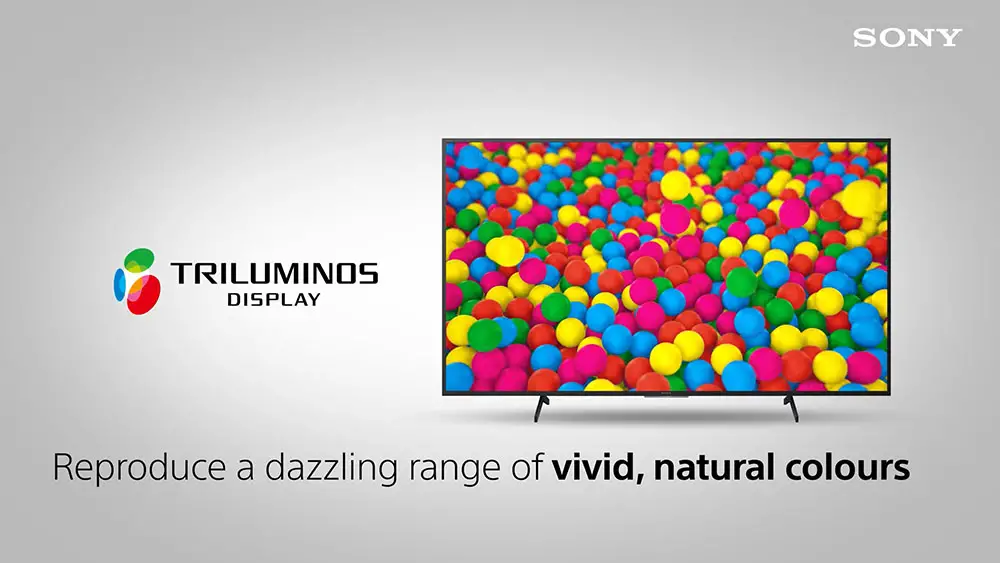
The second technology is one we mentioned earlier and is called Precision Color Mapping. This goes beyond conventional color enhancement, optimizing colors individually in real time. It drives the maximum performance of the display and controls the representation of every color perfectly in order to provide the best image result possible.
Now according to our measurements the X750H has a 90% coverage of the DCI-P3 color space which is extremely good for such a low tier TV while on the wider REC.2020 color space we got a 66% coverage which can also be considered very good. It may not be able to reach the numbers we have seen in some of the flagships but for such a dirty cheap offering these numbers are very promising.
Motion performance
Sony has done great job on the motion performance of their TVs so we were curious to see how such a low end unit would behave. The X750H is using a 60Hz panel (or 50Hz depending on your region) so nothing out of the ordinary here. The TV is using Sony’s Motionflow XR 240 technology which is Sony’s take on smoothing out the motion of the screen.
You have the option to use either the standard motion interpolation system or use the Black Frame Insertion (BFI) interpolation that is adding black frames in between individual frames and can potentially smooth out motion. BFI can be enabled by turning Clearness to max if you use the Custom setting in the MotionFlow menu. BFI did help with slightly smoothing the motion but there was obvious image duplication which degraded the image quality overall.
Lastly we should mention that the X750H does not support any kind of VRR technologies either HDMI Forum VRR, FreeSync or G-Sync. So if any of these are really important to you then you will have to look at a higher category than this.

Overall motion performance was good for this price but not great. Obviously you have to consider the category we are in so in total we would say that this TVs passes our tests but not without having some very notable problems. There was some very visible image duplication while interpolation seemed to have some problems with certain content.
Input lag
Next is our Input Lag testing and here we were hoping to get good numbers as even low tier TVs nowadays have managed to keep this at extremely low levels. And the unit didn’t disappoint us. The X750H managed to give as an average of 11.8ms in both 1080p and 4K resolutions. Obviously in order to go this low you will have to use the Game mode but the TV managed to be consistent with it across the various resolutions.
We did try to measure outside of Game mode and the input lag spiked to 143.8ms on average and stayed there most of the time. And while the numbers we got were pretty exciting we should mention that this TV is not supporting Auto Low Latency Mode (ALLM) so again if you absolutely want this feature you will have to check one of the higher models from Sony.
Before closing we did try out our F1 2019 with our trusted PS4 around Monaco and to be completely honest with you our time with it went by without a single problem. The TV did react to our commands immediately and everything seemed to register instantly to all inputs. So if you are looking for a cheap TV that you can use for your gaming pleasure also the X750H can fit the bill perfectly.
Image quality impressions
Overall our impressions of the X750H are what you would expect from such a low cost TV. It has its merits and if you consider the price you can get it, it can do offer a very good experience but on the other hand it is missing a lot of features and technologies that the more expensive units have.
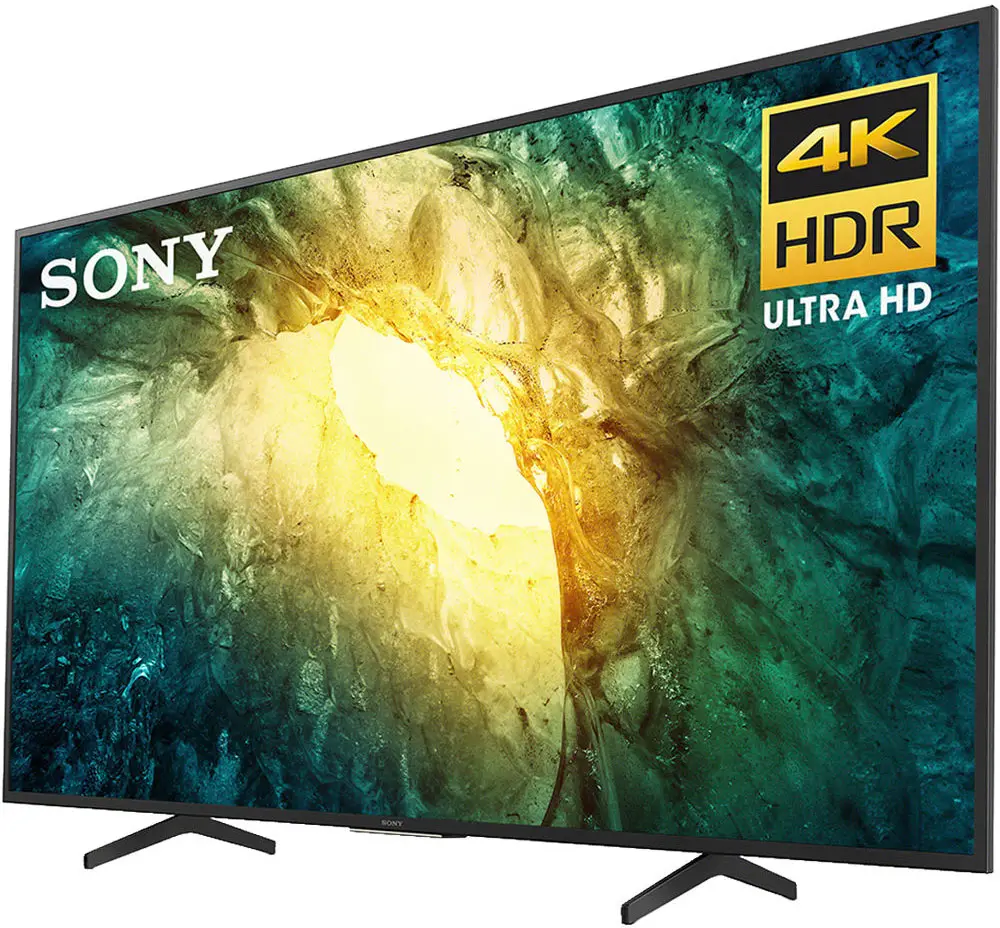
The TV had very good up-scaling capabilities with great color coverage, very good contrast ratio and extremely low input lag. Motion performance was ok although it had a few notable problems while the TV failed to faithfully reproduce HDR content as its HDR brightness is very low to make it justice. Its SDR brightness fared better and since there are not so high requirements with SDR content the TV had no major problems there. Also viewing angles were extremely narrow as is the case with all VA panels and with the X750H missing any kind of viewing angle technology to improve this you will have to sit on the sweet spot to get the best image quality possible.
Lastly the TV is not supporting any kind of HDMI 2.1 features like VRR technologies or ALLM which may be important to you now that the next generation of gaming consoles are almost here.
Audio Quality
Next is our audio tests and here things are pretty standard for the category the X750H belongs. Being at the bottom of the performance ladder the X750H comes with a standard 2.0 channels Bass Reflex speaker system with a total of 20 watts of power. What we get here is very similar to other low tier Sony TVs like the X800G for example that had similar specifications.
This system produced very clear sound with good stereo separation and could even go loud enough for such a low end system but overall it cannot offer anything more than the basic experience. There is no immersion or 360 degrees audio and all audio sources were firmly placed at the front. For casual viewing, news broadcasting, sports and for those that don’t have high expectations from the audio the X750H can do the job just fine.
And while in some other low end TVs we had seen, Sony was adding a few software based enhancements the X750H doesn’t have any so what you see is what you get. The unit supports both Dolby Audio and DTS but obviously no Dolby Atmos as it lacks both the hardware and the processing capabilities to do anything substantial with it.
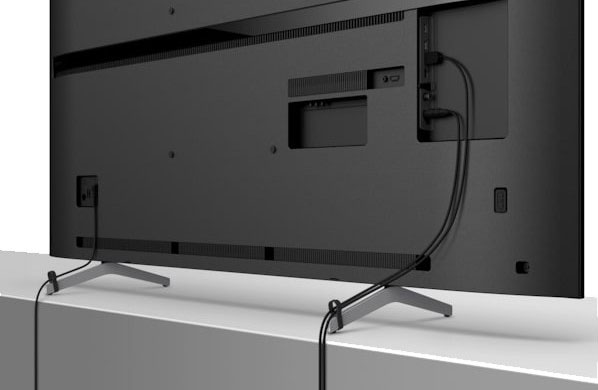
We went on and tried a couple of movies to get a feeling of how it behaves and our impressions were more or less what we were expecting. Good clear sound, nice and distinct dialogue but the TV lacked in many areas as the low end was very swallow and overall there was no immersion as everything was firmly fixed on the screen. If you want something more then we strongly suggest you add a soundbar that can greatly elevate your viewing experience. You can check our soundbars dedicated section for that.
Ports and Connectivity
All connection ports are located at the right side of the back panel and in what appears to be a rather strange design decision Sony has separated the ports into three groups. One of them is looking sideways and is preferable to use if the TV is wall mounted while the other main one is looking downwards which can also be useful when the TV is at the wall as it can make them easier to access. A third group has a couple of ports looking backwards but we are still scratching our heads why Sony decided to go that route and not add them to one of the other two groups.
Now for the side looking ports we get a couple of USB ports and two HDMI inputs. Below these we find the usual antenna/cable connector for broadcasting. On the second group with the ports that look downwards we find a composite video input along with an analogue audio stereo input, a digital optical audio output for connecting devices that don’t support HDMI and an Ethernet port. Lastly there are a couple of rear looking ports with a headphones jack and a third HDMI input.
Not many things to say here, after all the X750H is a very low end model so you shouldn’t expect anything out of the ordinary in this price. The HDMI ports are the older 2.0b with all of them being HDCP 2.3 compliant while HDMI 3 supports ARC but unfortunately no eARC. This means that you can pass through Dolby Digital and DTS through ARC but no HD variants of the audio formats mentioned. The USB ports are also the older 2.0 variant and to be honest we were not expecting to get anything better as even high end models don’t use these.
We should also not forget to mention the wireless capabilities of the TV as it comes with built-in WiFi (802.11ac) along with Bluetooth v4.2.
We are at the bottom end category here so no high expectations really. We would like to have at least eARC support as anything else belongs to higher categories really. But except from that what we have is what is usually the standard even in the most cheap TVs nowadays.
OS, Apps and Features
Let’s talk now about the TVs smart TV functionality. Sony for many years now have stayed firmly behind the Android platform which have been renamed as Android TV and has seen major changes and updates the last 2-3 years in order to be able to be on par and compete with the two other major competitors, Samsung’s Tizen and LGs webOS. Now for 2020 it seems that Sony has been very consistent with their smart TV platform as their entire lineup is using the full Android TV suite. With the only exception being the X750H!
Now while the model we are reviewing came with Android TV it seems that depending the region this is not always the case as in some markets instead of Android TV Sony uses a Linux system instead. The reasoning behind this is unknown but keep this in mind when you are searching for this particular model. The rest of our analysis will be based on the Android TV platform that was featured in the unit we had for testing.
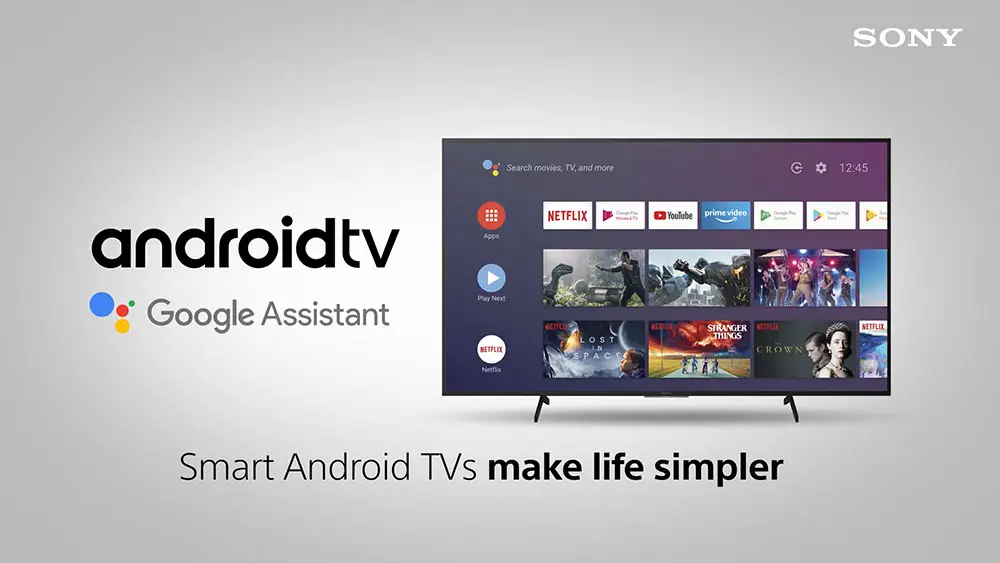
The X750H is featuring the latest Android TV 9.0 but it seems that it comes with less features than the other more expensive offerings this year. But even so this is the usual Android system we have seen lately with all its redesigned components that makes it feel fresh and easy to navigate. And since we mentioned navigation the one in this unit felt slightly sluggish and it was definitely not the smooth experience we wanted to see. Opening applications may take a few seconds more than the normal but if you are not particularly demanding you will get used to the timings.
If you had used Android TV before then you know more or less what to expect. The new layout is much better than some of the older Android versions with some options having been moved to the top of the screen while we find the same improvements that have been made to some other parts of the Android platform and operation system interactivity.
If there is one thing that Android has in abundance that is definitely the huge support from developers. Through the included Google Play you can find literally thousands of apps that you can download and use except from the pre-installed ones. There is so much content available that you will definitely find the ones you are looking for and the list goes on and on.
Some of the most big names are all accounted for including Google Play TV & Movies, Disney+, Netflix, Amazon Video, Sling TV, Hulu and Youtube as well as Pandora, Tidal, Google Play Music, Spotify or iHeartRadio. As always some of them are region dependent so make sure the ones you are interested in are working in your area. Lastly certain apps like Netflix and Youtube support playback for both 4K and HDR content for those interested in it.
Chromecast is also available here and it gives you the ability to stream content from other Chromecast enabled devices like mobile phones and tablets directly to the TV. Voice control is also present but it seems that it is a bit limited compared to other competing models. By that we mean that although you can use the remote’s built-in microphone to give commands to Google Assistant for Amazon Alexa you will need an external Alexa enabled device to work.
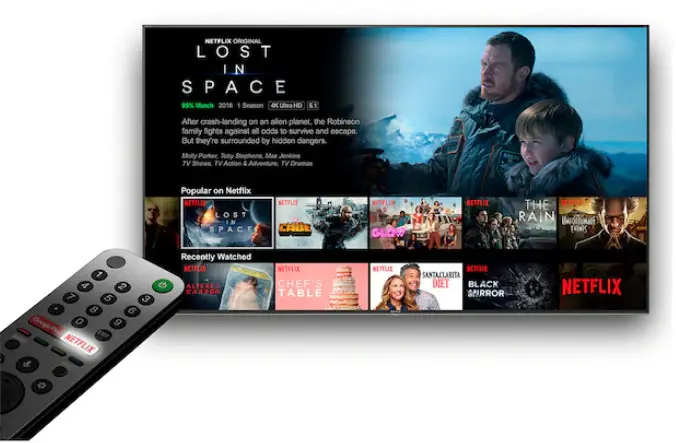
We have seen the same thing in some other Sony TVs also like the X800G and probably has to do with the fact that is using Google’s Android system and thus having Alexa built-in was not possible. With voice control you can issue various commands to the TV but functionality extends far beyond that as you can control any smart devices you have in your house also.
There is also a built-in media player available that you can use to playback various video and audio content from an external storage connected to the USB ports. Support is pretty good for a built-in player and compared to the competition we can admit that it will be able to play more files in comparison but in general don’t expect it to replace your dedicated media player box if you use one. If there is a file that is not following the usual standards it will not play it something that a dedicated player might will. But the files that do play didn’t reveal any playback problems like lagging or skipping. Everything was smooth and trouble free.
Unfortunately we should mention that one feature that the X750H will not get is support for Apple TV or Airplay 2. These features will be included only on the next model in the series, the X800H, and above so if you are hoping to get them also for the X750H we would suggest not to wait. If these are very important to you then you may have to take a look at the Sony X800H at least which is the lowest model that these will be released for. Low price comes at a cost we guess.
One last thing we need to mention is that there is no official app support for controlling the TV. If you want to control the X750H using your mobile device you can use the Android TV app made by Google that supports many of Sony’s TV the last few years. It’s nothing major but can be a nice alternative to the included remote if you want to have more options.
The X750H may have more limited capabilities compared to the higher tier offerings but still remains a solid performer in the low cost category. The Android TV 9.0 that came with the unit we tested may not be the fully featured system we have seen in other TVs but still offered all the basics so you shouldn’t worry too much if you have relatively low expectations.

Final Thoughts
The X750H is a low cost TV and should judged like one. Sony has created a very respectable unit and while there are many areas where this model underperforms in general if you think its target audience then things definitely look brighter for Sony’s cheapest 2020 model.
Let’s mention the good points first. The X750H may be cheap but definitely looks good even so and the remote design is far better than what you would expect from such a category. 4K images were pretty good with nice details and good clarity while upscaling was solid no matter what content we threw at it. Using a VA panel means that contrast ratio was great with nice blacks while color reproduction was above average. SDR brightness was good for what you get while input lag was extremely low in Game mode which makes this TV an excellent low cost gaming solution. Audio was good enough for casual viewing while the Android TV platform had enough features for such a low cost offering.
On the other side HDR brightness was not very good and the TV failed to show HDR content how it was supposed to be shown. Also the VA panel it has may offer good contrast ratio but it fares very bad in the viewing angles it can offer narrowing the sweet spot by much. Also motion performance although not bad, it was not as good as we were hoping and up to Sony’s standards while the TV is missing completely any of the new HDMI 2.1 features like VRR or ALLM that can be a huge deal now that the new generation of gaming consoles are almost here. Lastly this is the only offering from Sony in 2020 that does not support either Dolby Vision or Dolby Atmos as for these two you will have to go to the next model in the series, the X800H.
The TV more or less performed as we were expecting and it didn’t surprised us in any particular area. There are a few areas where it did better that we expected but if you look at it as a whole this is a low cost TV that is mostly suited for those that want a TV to get the job done rather than those that have specific high standards or requirements. So if you are the kind of person that are looking for a TV for your casual viewing or for gaming the Sony X750H can do just fine and will offer you exactly what you pay for.
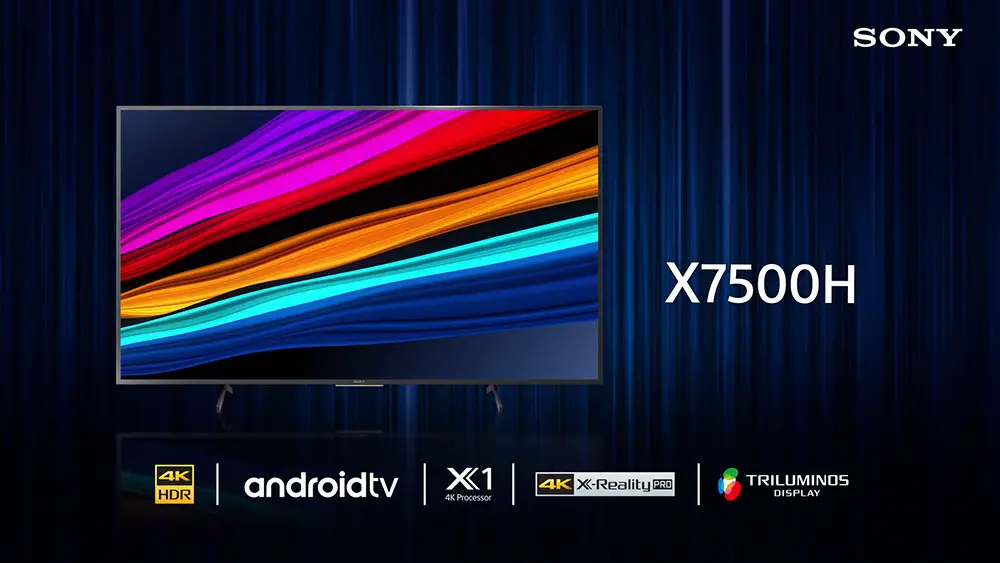
For more reviews you can check our dedicated 4K LED LCD TV reviews list or even look at our Product Reviews Table where you can find the brand and specific product you are looking for.
Cheapest Places to Buy :
*We are a reader-supported website. When you buy through links on our site, we may earn a small affiliate commission at no extra cost to you. Home Media Entertainment does not accept money for reviews.*

Sony has always been known for delivering top notch products so my next TV will certainly be a Sony. I am not usually going for the top models as my budget is limited so I always keep an eye on these low cost TV reviews. Thanks for such a thorough article.
You are welcome. If you need any help deciding let me know.
Hello there! TVs have gone wild with their features lately but me and my husband are looking for one to just watch our shows and sports so we don’t need anything special or expensive and the X750H looks like a nice one. I’m definitely going to order one from Amazon. Thank you
For a cheap unit for casual use the X750H is a fine TV really. If you need any assistance let me know.
Which panel does the New X75 contains
Do you mean if it uses a VA or IPS panel? Can you please elaborate?
Pls let me know which is better samsung Tu8000 or Sony x750h. Which one to buy?
Hello Sumit. In terms of picture quality the X750H is better as it has more brightness and better color coverage. The TU8000 is only better in having HDR10+ support along with ALLM that the Sony TV does not.
How would you compare this with Samsung TU850D series. Its $80 more than this Sony model at Costco. I couldn’t find your review on TU850D, so asking here. Thanks in Advance
We haven’t reviewed the TU8500 and there seem to be a few notable differences compared to the TU8000 that I had tested so I will not be able to give you a very definite answer. The Samsung TU8000 is inferior to the X750H but I would say that the TU8500 should be pretty close in performance. Personally I would go for the Samsung just because I like the Tizen platform just a bit more but this is more of a personal preference and any of the two you choose you cannot go wrong with.
Thanks. Thats very helpful. Which brand/model would you recommend to a room that receives a lot of light directly facing the tv? I read that Samsung performs best in darker rooms. I would like to know your opinion.
On a side note, I find your reviews very direct, unbiased and informative. Thank you so much!
Hello Adarsh. If you will be watching with direct light facing the TV then you definitely need a model that has a lot of brightness output. Unfortunately you will have to look towards the higher tier TVs for that and all three major manufacturers (Samsung, LG and Sony) have capable models to look at. Do you have a specific size for the TV and budget you are looking at? Maybe I can give you a couple of suggestions.
And thank you for your kind words. We always try extremely hard to provide our readers with easy to read but also informative reviews in order to make up their minds. Our website will never become brand oriented and we will always speak our minds on how we feel about a product we review, either good or bad.
Thanks Stratos.
I plan on getting a 65″ TV even though its tempting to get a 75″ TV with the 14 ft viewing distance I have. I am looking to spend $750-$1000 on the TV. I am a casual viewer so will be happy as long as I can get decent picture quality .
Yes, really appreciate the effort you put into simplify things for general readers.
I know the feeling of wanting to go for the bigger size! Get what you feel the most comfortable with. This way you will have no regrets later on!
Hi Stratos, Great Review as always!
How does this compare with the LG UN7300? Which would be better overall?
Thanks!
Hey Vikram. The Sony is slightly better in terms of image quality but I like webOS better than Android TV. So take your pick.
Is it worth buying this tv over TU8000 due to HDR experience since it has a wide color gamut or there won’t be a really noticeable difference? the Sony is worth 80$ more in my country.
Hello Makrim. For $80 more I would suggest you to go for the Sony as it has better brightness and better colors. It looses slightly on input lag but in terms of image quality the X750H is slightly better.
Thanks man for those great reviews…
I currently have the Sony x900f and even though looks great; my eyes hurt because that tv is way too bright for my bedroom and I’m looking for a non very bright tv for my bedroom. I’m between the Sony x750H 55inch and the LG 85 Nanocell 55inch, so which one do you thing is better? Thank you in advance!
Well, you must be one of the very few persons that want less brightness from their TV!!! My question is, did you try to adjust the brightness setting and it still is too bright?
As for the X705H and Nanocell 85 unfortunately I haven’t tested the LG so I cannot give you a fair comparison between the two.
Yes I did, but since that tv is full array, the brigthness it’s still too strong for a bedroom. Before that one, I had the Sony x810C and it was awesome since wasn’t too bright, but I feel that when i watch the x900f in my bedroom is like being seated in front of a light bulb….Do you think the X750H is not too bright?
For sure. If you think that the X900F scored more than 1000 nits of brightness in our testing and the X750H is close to 400 nits the difference is more than obvious.
With budget restrictions, looking for 55-65 inch TV that provides great picture and reliability. Tired of Samsung products as our two-year-old Samsung 55 inch just developed black block on right side of screen. Looking at LG 65 inch UN8500 series 4K, UHD, LED, LCD or Sony 65-inch X75CH Series. Any suggestions/recommendations?
Hello Dave. The Sony X750H is slightly better in terms of pure image quality as it has better colors, more brightness, better contrast and slightly lower input lag. On the other hand the LG has better viewing angles, a 120Hz panel (the Sony has a 60Hz) and comes with HDMI 2.1 and ALLM.
So if image quality is your only concern then go for the Sony. Otherwise the LG comes as more future proof with the inclusion of HDMI 2.1.
hello, do you recommend the Sony x70 55 “or Samsung tu8500 50”?
Unfortunately we haven’t tested the TU8500, only the TU8000 so I cannot give you a very clear answer to that. The Sony X750H is clearly better than the TU8000 but the TU8500 is using the slightly better Dual LED light system. If this improves brightness and color coverage compared to the TU8000 I cannot say but some marginal improvements there should be.
Hello, during your test did you notice if there was a slight black flash that appeared randomly on the bright stage? Because I have this TV and have returned it to the store several times and still have this problem.
Hello Ben. It’s been a while since I reviewed this TV but I don’t remember seeing what you mention.